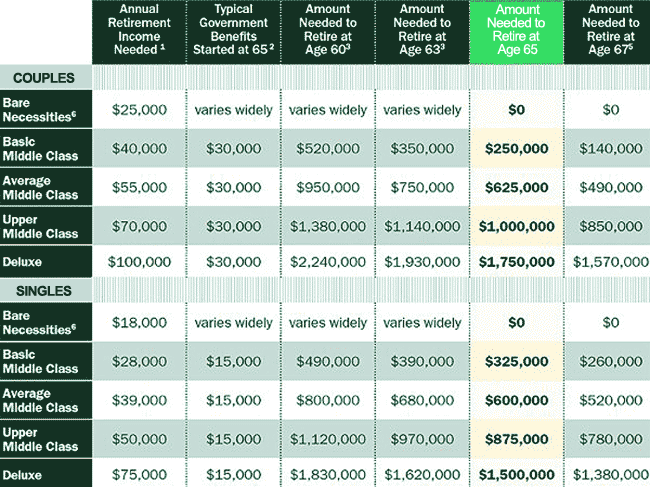Financial Independence, Retire Early – both of these things sound like great concepts don’t they? But are they realistic for most people or even attainable at all? Will you end up retiring early, but living in a tent in the middle of nowhere to do it? Will you have a similar lifestyle to what you currently enjoy? Let’s face it, retiring early takes a LOT of money if you want to do it comfortably and enjoy yourself. It also takes sacrifices along the way.
I recently watched a documentary called “Playing with FIRE“ and it kind of re-ignited the excitement in the idea of early retirement for me. The story line examines a couples decision to pack up and leave the expensive and comfortable lifestyle they currently enjoy. The new goal being to supercharge their savings in order to take years off their working careers and eventually retire early. It highlights the hardships and difficult decisions that must be made to reach their goal of early retirement. It also explores how various purchasing decisions can affect the total length of their working careers.
Early Retirement Dreams
Retiring early was something that I thought about and hoped for as far back as my early teenage years. I remember thinking about it while reading the Wealthy Barber and how saving for the future was important. Also seeing those old Freedom 55 commercials and reading stories about young savers or entrepreneurs who had achieved “Freedom 35”. That was something I thought I wanted to achieve.
I was always a good saver, but didn’t take it much farther than that early in my earning career. I hadn’t made a point of actually doing the math and figuring out how much I needed to save or what sort of a difference it would make to my potential retirement age or the length of my working career. Some people say they love their jobs or don’t care about retiring early, but I’m fairly certain nobody would object if you offered them the option to retire early. If the only objection was that you actually enjoy your career, than the FI (Financial Independence) portion would suit you just as well. Work when you want to, on the things you want to, but not because you have to!
So if no objections, then it begs the question…. If practically everyone wants to achieve some form of FIRE, then why are there so few that actually complete this goal? Or so few that even establish tangible targets to do so? Let’s dig in a little a little and find out why F.I.R.E can be so difficult for most people to achieve. And if it’s really even possible for the majority, or if most of us are simply destined to work until traditional retirement age.
What is F.I.R.E?
I touched on this briefly above, but we can dive into the actual definition a little more here. Financial Independence Retire Early, is in essence the ability to have your passive income cover all of your living expenses. This in turn gives you the ability to retire or be free from having to work, since your income that is generated without you doing anything, is enough to cover all of your bills.

Your SAVINGS RATE can be defined very simply as the percentage of your net income that you save after all of your expenses. So if you earn $5,000 a month and save $1,000 after paying your mortgage, food, utilities and all other expenses, your savings rate would be 20%. (Savings / Earnings * 100 — or $1,000/$5,000*100 = 20%).
Average Savings Rates
That 20% number might seem low, but it’s actually fairly high relative to what the majority of the general population save. The higher your savings rate, the faster you will achieve your goal of FIRE. These two contributing factors are within your control, both Income and Expenses. The more you earn, the better obviously but even more important are your expenditures. The less you spend on things within your control such as your housing, food etc. the better your chances to achieve FIRE at a rapid pace.
Depending on your career, it can be difficult for some to earn a high wage in order to achieve extreme savings rates. You may become maxed out at some point in your career. For example, if you are a teacher – there is likely a ceiling on what you can earn. This is why expenses become extremely important and relevant both for your savings rate and for your F.I.R.E target – also known as your FI Number. More on that in a minute…
The important point though, is that the less you can live on, the less money you will need to generate when you are retired since your expenses will be low. Lowering your expenses during your working career will also have a 2x effect of earning more, as it will let you ramp up your savings rate and expedite your F.I.R.E journey.
How Do I Achieve F.I.R.E?
As discussed, to achieve F.I.R.E your passive income will need to cover all of your expenses, so how do you do this? First you will need to estimate your living expenses when you are retired. It helps to start with a current budget to see what your living expenses are right now, then create an adjusted budget for your optimal future retirement. To expand on that, you will have expenses that will alter your future budget such as higher medical costs, inflation and possibly lower housing costs, or no mortgage payments.
Once you have estimated your annual living expenses for retirement (let’s make our example $60,000/year), you then need to figure out how much money you would need invested or being generated to cover those expenses (in this case $5,000/month). Now you don’t want to just save up a bunch of money and burn through it, trying to guess when you will die. The idea is to have your assets generate that income for you so that you never have to touch the principal balance of your investments.
PASSIVE INCOME OPTIONS
There are many ways people do this such as having an investment portfolio that generates dividend income, investing in income producing assets such as real estate that pay you rent each month, or a business that can operate on it’s own and pay you a distribution such as dividends or royalties. Some choose to do this with stocks and bonds, others choose the real estate path – some a combination of both or all three. There is no right or wrong way, it really just comes down to your comfort level, interests and expertise.
If we take the most common example of a dividend portfolio, generally you will want to have enough money that you can live off approximately 3-4% that is generated from the principal as your income. This is how you will calculate your F.I. Number (Financial Independence Number) – or the amount you need invested in order to support your desired living standard. You can calculate the amount you will need saved up, using either of the following two methods below.
Desired Retirement Income divided by 4%
Example ($60,000 / 0.04) = $1,500,000
or
Desired Retirement Income x 25
Example ($60,000 * 25) = $1,500,000
So to draw an income of $60,000 annually at 4% you would need an investment portfolio valued at $1.5 million dollars.
If you are more conservative and only want to draw 3% from your investments, you can apply the same examples to a 3% dividend payout as follows:
$60,000 / 0.03 = $2,000,000
or
$60,000 * 33.33… = $2,000,000
The idea behind any of these examples, as explained earlier is that you will never touch your principal and will only be drawing an amount that is sustainable by your growing investment portfolio. Doing this ensures that you do not have to worry about ever running out of money, because you are never withdrawing from your principal sum invested. Keep in mind that your FI Number may not actually need to be this large as some will have other sources to draw income. For example, you may have the Canada Pension Plan later on or possibly a Defined Benefits Plan / Pension from your employer to supplement your dividend income.
Prairie FIRE Canada had a good explanation of these calculations above and I’ve also essentially copied the budgeting table there and modified it slightly to fit my own budget and potential retirement and semi-retirement budget examples in the next section below.
I Calculated my FI Number – It’s Daunting!
A little further down the page I’ve put together a rough household budget I’ve had in the past, and yes I know it’s a little high! But that is the whole point, to illustrate how a good majority of people live their lives. Spend everything you make on life and expenses, and don’t save anything. This is what your FI Number would be in that scenario. Many of us are guilty of living well beyond our means thanks to cheap and easy credit, levels of extravagance that are probably not sustainable in retirement. This is particularly true, if you want to follow the F.I.R.E model of drawing down income from your investments.
The first big reason why F.I.R.E is hard, is that your FI Number may be downright depressing, so much so that you never get started! If I take my sample budget and assume I want to retire with the same lifestyle and the same expenses, I will need to save up around $3,000,000 dollars. HA! Good luck with that one. Perhaps if I had started investing when I was in grade school that might be an option.
This is why most people just give up. It’s a ridiculous number considering you likely have a house to pay for, schooling for kids and can only save so much of your income after taxes and expenses. Many are lucky to save anything, so a million dollars could take a lifetime.
But hold on a moment, will your current expenses be that high in retirement? Likely not…
Draw Down Rates and Retirement Options
The table below has been broken down into three categories to illustrate how your FI Number can change based on your expenses as well as your expected draw down rates. The first example (Current Budget) is an FI Number calculated based on my current budget. The second example (Future Budget) is based on a potential retirement budget, targeting an annual expenditure of about $65,000. The final column (Semi-Retired) is an example of “semi-retirement”, which would have us continuing to work but minimally and at our own leisure and on our own terms. This is what some people refer to as Financial Independence Work On your Own Terms.
The various draw down rate scenarios illustrate the amount of total money you would require if you were drawing an income from your portfolio at each percentage. For example, if your portfolio was $1,000,000, at a 4% draw down rate you would be taking out $40,000 per year. At 3.5%, $35,000… and so on. Many studies have been done and it is generally accepted that between 3%-4% is a safe amount that you can reliable draw over your retirement years, without having to eat into your capital.
SEMI-RETIREMENT

The semi-retirement example in the table below illustrates a couple earning just $1,500/month each, which theoretically could work out very well if you are drawing your supplementary income from a tax-free savings account. You could draw this tax free income while also earning a regular pay cheque and paying very little tax on those earnings by being in the lowest tax bracket.
Another consideration when looking at such large current expenses, is that in the future some will be much less. Sure a few of them will be more like health care and you have to adjust for inflation – but other expenses may be completely eliminated. In the examples below I’ve estimated around 3% inflation in most cases over roughly 15 years. You should have specific categories like your mortgage that may be significantly less or non-existent in your retirement years. I’ve made some specific budget category notes below to give some more thoughts and insights on this.
| Category | Current Budget | Future Budget | Semi-Retired |
|---|---|---|---|
| Grocery | $862.31 | $600.00 | $600.00 |
| Restaurants / Fast Food | $210.39 | $100.00 | $100.00 |
| Auto Insurance | $151.62 | $197.00 | $197.00 |
| Home Insurance | $110.96 | $143.00 | $143.00 |
| Life Insurance | $196.70 | $0.00 | $0.00 |
| Mortgage | $1,796.00 | $0.00 | $0.00 |
| Property Tax | $386.57 | $400.00 | $400.00 |
| Child Care | $1,223.15 | $0.00 | $0.00 |
| Cell Phones | $203.06 | $263.00 | $263.00 |
| Cable / Internet | $80.62 | $130.00 | $130.00 |
| Hot Water Tank | $25.21 | $0.00 | $0.00 |
| Hydro / Water | $195.74 | $264.00 | $264.00 |
| Gas Heating | $126.31 | $163.00 | $163.00 |
| Toll Roads | $72.17 | $20.00 | $20.00 |
| Personal Loans | $66.66 | $0.00 | $0.00 |
| Student Loans | $500.00 | $0.00 | $0.00 |
| Other Loans | $100.00 | $0.00 | $0.00 |
| Pets | $200.00 | $260.00 | $260.00 |
| Car Payments | $372.00 | $0.00 | $0.00 |
| Home Maintenance | $618.75 | $804.38 | $804.38 |
| Car Repairs | $279.88 | $300.00 | $300.00 |
| Gasoline / Fuel | $397.68 | $250.00 | $250.00 |
| Medical | $149.86 | $447.00 | $447.00 |
| Boat | $212.00 | $0.00 | $0.00 |
| Recreation / Activities | $272.30 | $300.00 | $300.00 |
| Gifts | $100.00 | $200.00 | $200.00 |
| Cash | $50.00 | $40.00 | $40.00 |
| Vacation / Misc | $600.00 | $600.00 | $600.00 |
| Monthly Expenses | $9,559.94 | $5,491.38 | $5,491.38 |
| Part-Time Income | -- | -- | $3,000/month |
| Annual Expenses | $114,719.28 | $65,896.56 | $29,896.56 |
| Draw Down Rate | Current FI Number | Future FI Number | Slow FI Number |
| 4.0% | $2,867,982.00 | $1,647,414.00 | $747,414.00 |
| 3.5% | $3,277,693.71 | $1,882,758.86 | $854,187.43 |
| 3.0% | $3,823,976.00 | $2,196,552.00 | $996,552.00 |
Budget Notes
As mentioned, your budget will likely change due to a number of factors when moving into your retirements years. Some costs will go up, but many will go down. You will also likely have the option to lower or eliminate some budget categories as your expenses there could be related to work, such as commuting or lunches out with colleagues. Here are some of my thoughts on a few select categories and how you can lower them in retirement:
GROCERY
Your grocery budget should decrease in retirement, particularly if you have kids who have left the nest. Feeding two people versus four as an example, is an instant savings! Grocery budgets are also one of the best areas to cut your food expenses through planning and discount shopping.
MORTGAGE / PROPERTY TAX
Your mortgage is undoubtedly a huge expense during your working career, most of the time your largest. Once it has been paid off, it will take a huge load off your budget and overall living expenses. Many people will also choose to downsize their homes in retirement. This will give you the added advantage of a lump sum of cash hopefully to invest and generate even more income. You may also benefit from lower property taxes and home insurance costs. On top of that, downsizing could likely mean your utility costs will going down too and potentially your home maintenance costs. Downsizing your life can be a big key to retiring early.
HOME / LIFE INSURANCE
Your insurance costs (besides medical) are also an area you can save during retirement. If you only need one car, or if you downsize your home – those insurance costs should decrease. Many people also have life insurance, disability insurance or mortgage insurance. Life insurance, mortgage insurance or disability insurance can be purchased for the purpose of being able to pay for your home or your mortgage in case one spouse passes or can no longer work. If you no longer need to work, or if your mortgage is paid off in the future, you won’t necessarily need this insurance to support your lifestyle in case of an accident. So there is the option to either eliminate it or reduce it a great deal.
CHILD CARE
Unless you have children very late in life, you likely won’t be paying for daycare, after-school care or babysitting during your retirement years. (Unless of course you retire early!) For most parents, eliminating daycare costs is a huge burden lifted and can help you invigorate your savings.
HOT WATER TANK
Not a huge expense, but I’m noting it as the expense drops to zero in my example table. Many people rent their hot water tanks, purchasing outright can reduce this expense to zero (minus your initial costs and servicing). In the majority of cases this should save you money, otherwise these companies wouldn’t be renting the units!
AUTOMOTIVE EXPENSES / FUEL / TOLL ROADS
Vehicles expenses will see an immediate decrease for anyone who no longer has to commute to work 5 days a week. Fuel savings can be huge, not having to pay highway tolls, and less wear and tear and maintenance on your car. You can also reduce your car insurance costs if you’re driving less. At this point in your life your car may be paid off as well and you can get rid of lease payments. Some families may even decide to eliminate one of their cars entirely. Huge savings.
MEDICAL EXPENSES
This is a category that will almost certainly go up as you age. Even with government health care in Canada, there are still things like prescriptions, dental procedures, physio treatments and more that aren’t necessarily covered fully even by your private insurance. Some people will have more insurance than others through their employers or have purchased their own health insurance plan. It’s fair to say that this expense category can be quite variable. For this example I’ve cautiously tripled the monthly expense.
RECREATIONAL ACTIVITIES
I’ve left this category as is, because although some of us will quit certain activities as our bodies no longer allow us to do them, they will likely be replaced with other hobbies. For some however, this category may actually be a source of savings if you have children involved in expensive organized sports or clubs such as dance, gymnastics, horseback riding, music lessons etc.. As your children get older, these expenses will likely disappear.
VACATIONS
I’ve left this expense the same in my sample budget, but it’s another area that can be chopped down hard if you really want to retire early and don’t need to travel or vacation expensively. There are so many things you can do for free or cheaply in comparison to something like an all-inclusive trip to a resort with air travel. Even cutting down your travelling or special trips to once every two or three years could help you retire earlier. Again, a personal preference on how you see your retirement lifestyle.
Budget Summary
It’s clear to see that the amount you need to live off of during retirement, will make a tremendous difference to your FI Number. With a 4% draw, my current budget would be a laughable goal (at least to me) of $2.87 million in an investment portfolio. However, once you move to a more modest retirement budget, that number drops almost in half to $1.65 million or just over $65,000 in annual dividend income. If semi-retirement was a goal, I could cut my working hours back and would only require $747,000 invested. Still a lot of money, but nowhere near $3-$4 million!
There are lots of ways to trim this sample retirement budget even further, and it all comes down to what sacrifices you are prepared to make in your life in order to retire early. It’s essential to evaluate what’s most important and how many additional years you are willing to work to maintain a lifestyle, a big house, or a fancy car. You also need to be realistic in what you want to achieve in retirement. Perhaps downsizing and taking a chunk of money to invest would be easiest for many people. Either way, it’s fun to play with the scenarios and see how early you could potentially retire or become semi-retired by cutting expenses out of your life and figuring out just how much you will need to save to meet your income to expense goal.
Calculate Your FI Number Based on Your Goals
I recently put together an excel spreadsheet that calculates your FI Number based on a full budget. I will likely make that available to download soon, but also thought it might be more useful to just have it right on the website. So I created a truncated version of the calculator below that will give you your own FI Numbers based on a few different scenarios.
It mimics the table above where the first column is based on your current monthly expenses and how you are living your life now. The second column is based on your expected expenses during retirement. The third and final column lets you add a monthly income for those considering semi-retirement as an option.
In each case, the idea is that your FI Number will provide you with the amount you will need invested to generate enough passive income to support your lifestyle without having to work – or to supplement your income in the case of semi-retirement. The table displays draw down rates of 3%, 3.5% and 4% to provide a few different scenarios. These FI Numbers are the amounts that would be required invested to retire depending on the percentage you are comfortable withdrawing from your portfolio each year.
| Current Budget | Future Budget | Semi-Retired | |
|---|---|---|---|
| Passive Income Target | |||
| Draw Down Rate | Current FI Number | Future FI Number | Slow FI Number |
| 4.0% | |||
| 3.5% | |||
| 3.0% | |||
Examine you Results
You’ve probably discovered by now that in order to retire comfortably without touching you capital, you need a LOT of money invested! For example, if you only spend $2,000/month, which is very low in my opinion, you still need $800,000 to live off of 3% interest! That is definitely attainable, but $800K is still a TON of money! So double that to a more reasonable $4,000/month and all of a sudden you need $1.6 million! Keep in mind this is all cash assets, on top of things like the equity in your home that you will likely be piling money into during your working years.
So back to the question of why people don’t bother doing F.I.R.E? …
F.I.R.E is Hard!
The numbers are clear, if you want to live off a decent sized income, you will need a lot of money saved and invested! This will take sacrifices during your earning years and a good savings rate to get you there. You also need to be realistic about your retirement goals and what sort of budget and draw down rate is reasonable.
Keep in mind also that your real world budget will be variable and you may need to adjust spending from year to year. Expenses won’t be the same every year and your investments will not likely perform the same every year. You need to account for this.
F.I.R.E is possible though if you embrace the key factors from earlier, making your savings rate as high as possible, your expenses as low as possible, and keeping time on your side by starting as early as you can. It doesn’t even necessarily have to take that long if you focus, just look at Liquid Independence of the Freedom 35 Blog who has unlocked Financial Freedom after only 12 years and ahead of schedule at the age of 33!
If you don’t think F.I.R.E is possible for you, or you are a late starter – there are still options to enhance your lifestyle. You can take the Slow FI or Coast FI route where you don’t necessarily have to work full-time. Perhaps you only work to support your current expenses if you are already on track to have enough savings invested at your planned retirement date.
Many Paths to FI or RE
It takes a lot of money to achieve Financial Independence, we’ve established that much. So if you don’t think you can pay off a family home and save a million dollars, there are a multitude of other paths to take and factors to consider. You don’t necessarily have to follow just one recipe to get there.
Below is a chart from MoneySense magazine that estimates how much money you would need to retire at different ages and at various comfort levels, as both an individual or as a couple.
Semi-retirement is obviously one option we’ve discussed, but what about those that want to achieve true retirement? The first thing that comes to mind is downsizing. Many close to retirement age will sell their primary residence and downsize, then use any remaining proceeds to invest. An example would be paying off your home worth $800,000 in the big city and deciding to move to the country to a smaller home, pocketing and investing half the money.
Pensions / CPP / Generational Wealth
Other factors to consider when looking at the daunting savings numbers required, are that you may have other sources of income besides only your investments. You may have a defined benefits plan or pension through your employer that pays you a specified amount. You may be eligible to receive money through the Canada Pension Plan or Old Age Security to supplement your income later on.
As you get older and closer to retirement age, your family will age as well. You might receive money from passed relatives in the form of trusts, inheritances or gifts that would help boost your savings or investments. Just keep in mind that these are things you shouldn’t necessarily count on, but may factor into your overall plan at some point.
Alternative Lifestyles

Tiny homes or RV’s are totally an option if that’s something you can handle. I actually met a guy in the past year who decided to sell everything he owned including his home, bought a truck and a big towable camper trailer …and just left. He decided he had enough money that him and his wife (no kids) could cash out and travel the continent, staying at campgrounds and national parks and just enjoy life.
Tiny Houses
Eliminating a traditional home and property can be a massive cut to your required living expenses. Not to mention you may very well be pocketing the majority of the equity of the home you sell. A tiny house is not something I could do personally or permanently with a family, but the idea is so intriguing to me. The fact you can move your home anywhere and have very minimal expenses. I was curious what it would actually cost to maintain a tiny house, so I found a great video and post online from TinyHouseGiantJourney.com that went over a sample budget.
A Tiny House Budget
So here’s a rough budget for a tiny house. I guess you may have to buy some extra bottled water from the grocery store, and may pay a little more for auto insurance if you need a big truck to pull that house on a trailer but the budget looks pretty short and simple overall!
| Category | Budget |
|---|---|
| Parking / Rent | $600 |
| Gas | $20 |
| Home Insurance | $74 |
| Home Maintenance | $50 |
| Total | $744 |
The house this tabulation is based on was about a $30,000 build. Taking that into account, you are saving a ton of money either buying a cheap house or not having to pay a mortgage (plus no property tax payments!). Just imagine your savings rate with a housing budget of around $744 a month and your largest expenses being parking. As the article above says, if you look hard enough or do a little work exchange you can probably get your parking much cheaper than that or possibly even free.
It’s About Improved Lifestyle
Clearly everyone isn’t going to want to live in a tiny house or an RV for the rest of their lives. You may have 3 kids and couldn’t fathom having them crawling all over you in 200 sq ft of space until the end of eternity, or homeschooling them on the road.
The tiny house is an extreme example, but is more to represent the many options and paths people have to achieving financial independence or early retirement. The whole purpose is to improve your lifestyle by working less and doing more of the things you enjoy. You also don’t want to severely deprive yourself along the way to the point that your F.I.R.E journey becomes miserable.
Overall though, this can be a great thought exercise to examine your expenses and decide what is most important in your life. What are the things you are willing to continue working for, in order to have long-term. Once you’ve figured that out, you will hopefully be on your way to incremental amounts of financial freedom every year you continue on this path.
Just remember that it is possible and there are many ways to get there. It’s not a race and the fastest way may not always be the best way for you.
Once F.I.R.E is Achieved
So if you’re one of those people who are lucky enough to have accumulated enough wealth to live off your investments, the next step is figuring out the best way to do this. You will likely have your investments spread out over a number of accounts such as a Tax Free Savings Account, RRSP’s, Taxable Accounts, Pension, Real Estate Income, CPP… the list goes on. Point is, you also need to consider the best way to manage your income to optimize your retirement and preserve your wealth for future generations.
I recently listened to a podcast from FI Garage – featuring Mark Seed of MyOwnAdvisor.ca who touched on this issue. Many people don’t think about this portion of the journey since the end goal can seem so far off in the beginning. But it is just as important once you have achieved financial independence, to strategize the best ways to extract value from the resources you have saved up and the most tax efficient ways to withdraw. Planning becomes extremely important and it may be wise to sit down with a professional as it will likely save you a lot of money in the long run.
It’s also important to consider that you will not be drawing the exact same amount of income every year. You may decide you want to purchase a new car one year, or go on an extravagant vacation. Keep this in mind when you are planning and saving, as your income requirements will likely be different every year during retirement.
Summary & Good Luck on your F.I.R.E Journey
I don’t follow the actual FIRE community that closely, but from what I hear there can be quite the contention regarding what true FIRE actually is. As in, does it only count if you are completely retired? If you continue working for fun, is that just FI?
What is F.I.R.E?
Personally I could care less about a precise definition. To me the entire concept is simply having the ability to retire earlier than a traditional retirement, or to be financially independent to the point that you don’t have to rely on a 9 to 5 job to pay your bills. Whatever the definition is, we can probably all agree that the main purpose is to improve our overall happiness and lifestyles by providing more options and freedoms.
How is F.I.R.E Achieved?
The generally agreed upon principle is that FIRE is achieved once your passive income will cover all of your living expenses. The result is that you can live off your generated income from investments and have the choice to no longer work unless you desire to.
Be Flexible with your Budget
Your retirement budget will change from your current budget. Be flexible with your budgeting not only in order to achieve FIRE, but afterwards as well. Your numbers may fluctuate from year to year during retirement. Some years you may draw more income than others, depending on market conditions or your own living situation. It’s important to take that into account and be adaptable.
Calculate your Goal but be Realistic
Use the FI Number calculator above to determine your FI Number based on different scenarios. How much money you will need to retire based on your projected retirement budget, or semi-retirement budget. Also remember to be realistic in your expectations of your living standards and to take inflation into account since your retirement date may be a number of years out.
Choose a Path that you can Live with
It’s important to remember that your path to financial freedom shouldn’t be painful. You still need to live your life and you can’t live off of rice and beans for 10 years, you likely won’t follow through! Find a balance of an acceptable savings rate and a lifestyle that’s comfortable along the way. This is why some choose the Slow FI route, where you can meander your way to true financial independence or retirement, but without living in poverty for a decade to get there.
Plan for the Future and Review your Plan Annually
Develop your strategy of how much you need to save and how you will accomplish this. Once your plan is in place, review it from time to time to see if it can be improved upon. Can you make changes or eliminate things that are no longer important in your life, or re-allocate funds to things that are.
Enjoy the Journey
The journey is personal, so do your best to find your own path and ignore the noise along the way. While some may want to stay in their forever home, you may be perfectly content trekking the continent and living in campgrounds. It’s all very personal and there is no right way to get there.
Good luck with your F.I.R.E adventures and hopefully you achieve them sooner than you imagine.









I’m so impressed with your graphics! Did you draw all these yourself? I’ve seen that $20 bill photo (stock photo) but like the cool fire you added to it.
I’m all for semi retirement/ working part time until maybe 50 or late 40’s. Continuing working a bit keeps the brain healthy too so it doesn’t turn into mush.
Ha, thanks – but no sadly I didn’t draw those! I do use a mix of my own photos and stock images. I try to find less used stock or modify them to the point that they’re at least somewhat unique. For example the Starbucks logo here with the sad lady begging with her coffee cup is all customized by me: https://familymoneysaver.ca/expensive-coffee-habit/
I’m also impressed by your images, graphic design AND FI calculator! What did you use to create the calculator?
I’m also not regimented with my definition of FIRE and am just happy to see people do better with their money.
Thanks so much! Truth be told, I could tell when I first saw your website that someone was paying attention to details there! Great design work.
I made the calculator for myself in Excel and then basically just copied it / converted it to javascript. It’s super basic calculations, I just tried to put a nice wrapper around the outputs. 🙂
Wow, cool. JavaScript scares me, ha ha! I’m always in awe of people who know how to use it.
What do you do (did you do) to have so much web knowledge and a good eye for design? I know you said you did SEO work previously. Are you trained in website design/management?
Just curious how you developed such a unique set of skills!
Yep, you nailed it. Jack of all trades, master of none, haha. Formal Web/SEO/Design/Programming… and a touch of Finance.